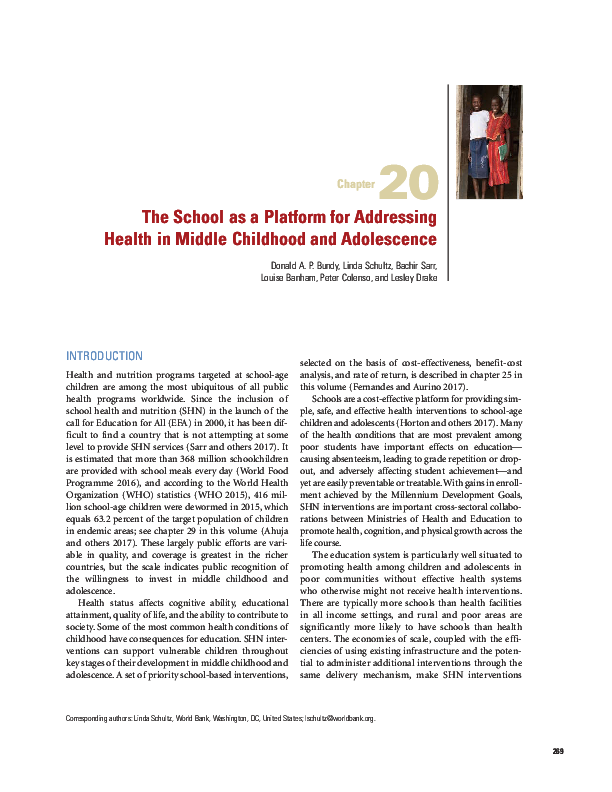
DCP Chapter 20: The School as a Platform for Addressing Health in Middle Childhood and Adolescence
Publication year:
2017
English
Format:
pdf (356.5 KiB)
Publisher:
The World Bank Group
There is a developmental rationale for improving the health of school-age children and an economic rationale for administering health interventions to school-age children (typically from ages 5 to 14 years) through existing educational systems as compared with the health system. The school system offers a number of advantages as a health delivery system in low-income countries. Building on an existing, pervasive infrastructure can reduce start-up costs, accelerate program implementation, and reduce programmatic costs, while optimizing benefits for education, increasing access to care for the most marginalized, and encouraging girls to attend and stay in school. Sustainable national school health programs depend on mainstreaming these programs into national policies and plans, as well as increasing national financing for school health and nutrition (SHN) and strengthening cross-sectoral institutional implementation capacity. Existing resources can help the education sector identify policy gaps and opportunities, improve implementation, and scale up—an approach which proves most effective if the health sector retains responsibility for the health of children and the education sector retains responsibility for implementation.
>> Press here to return to the Disease Control Priorities (3rd Edition) Start Page
Read full abstract
Authors
View & Download
Document information
Publisher
Format
Rights
© Author/Publisher
Found a mistake? Help us improve!
If you have noticed a document assigned to the wrong author or any other inaccuracies, let us know! Your feedback helps us keep our data accurate and useful for everyone.
Share
Link
